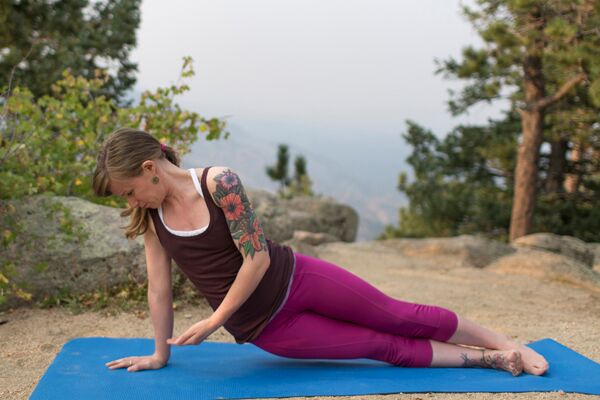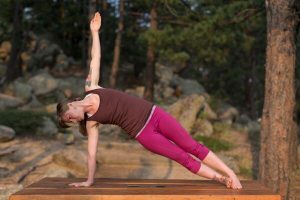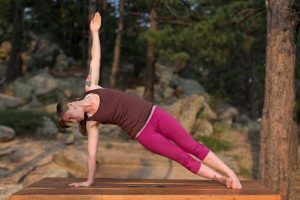 As we make our way into the summer, I wanted to incorporate a pose that will shed any residual Kapha (congestion, weight gain, sluggishness, etc) that may be left over from the winter and spring seasons. Vasisthasana is the perfect choice, as we get moving and shaking in a very balanced manner. This posture is considered tri-doshic meaning it is suitable for all body types, as it targets and tones multiple areas of the body from head to toe.
As we make our way into the summer, I wanted to incorporate a pose that will shed any residual Kapha (congestion, weight gain, sluggishness, etc) that may be left over from the winter and spring seasons. Vasisthasana is the perfect choice, as we get moving and shaking in a very balanced manner. This posture is considered tri-doshic meaning it is suitable for all body types, as it targets and tones multiple areas of the body from head to toe.
Vasisthasana is perfect for Kapha imbalances since it works to tone the muscles while reducing fat tissue (meda dhatu). This arm balancing posture is also specific for opening up the chest, a main region of congestion (both physical and emotional) for many Kapha disorders. Increasing physical strength in the body often allows us to feel more confident and powerful all around, removing low self-esteem and insecurity, another potential Kapha issue. To increase these Kapha-balancing properties, it is recommended to add in some movement to this posture (see “vinyasa variation” instructions below).
Vata can find much benefit in this pose as well. All static, balancing postures tend to be Vata-balancing due to the grounding energy that they provide. Vasisthasana is very strengthening to the muscles, which can often be weak or emaciated in Vata individuals. Therefore this posture should be practiced in the original static form, staying for an allotted number of breaths, and slowly but steadily increasing the hold overtime to build strength without causing depletion.
Pitta types can work on this pose by focusing on the solar plexus region, a powerful site of Pitta. The opening of the side abdomen that occurs is also a great way to release excessive heat in the body. To increase this benefit even further, those of a Pitta nature can stretch the top arm over the head, bringing it parallel to the floor to really emphasize this side body opening. Pitta types tend toward overdoing things however, so this pose should only be held for short periods of time to avoid overheating, overexertion and increased Pitta.
Vasisthasana
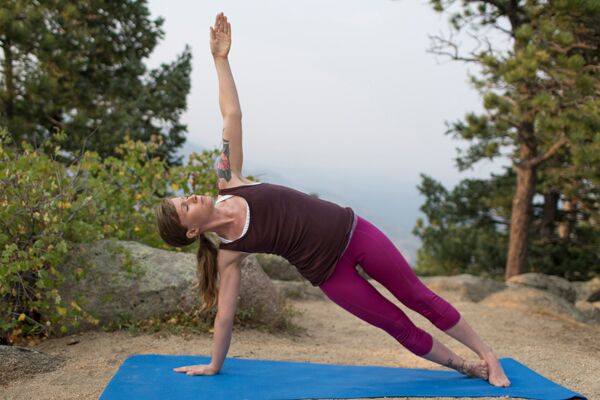
- Doshic Qualities: Vata ↓,Pitta ↓, Kapha ↓(May increase Pitta in excess due to the heat factor)
- Best Season for Practice: Fall, Winter, Spring, Early Summer (avoid in times of extreme heat)
- Elemental Component: Grounds Air and Space; nourishes and strengthens Earth, Water and Fire
- Main Areas of Strengthening in the Body: Abdominal region, legs, arms, wrists, lower back and spine
- Main Organs and Systems: Abdominal organs, heart and lungs
Health Benefits of Vasisthasana
- Strengthens and tones the arms, legs, spine, lower back and abdominal muscles
- Opens the heart and chest
- Removes congestion
- Tri-doshic, reduces all 3 doshas
- Increases self-esteem, confidence and self-empowerment
- Creates a sense of grounding
- Calms nervous energy
- Promotes overall balance of mind and body
Contraindications
- Late stages of pregnancy
- Wrist issues such as tendonitis and carpal tunnel
- Hernia
- Vertigo
- Hypertension
- Lower back issues
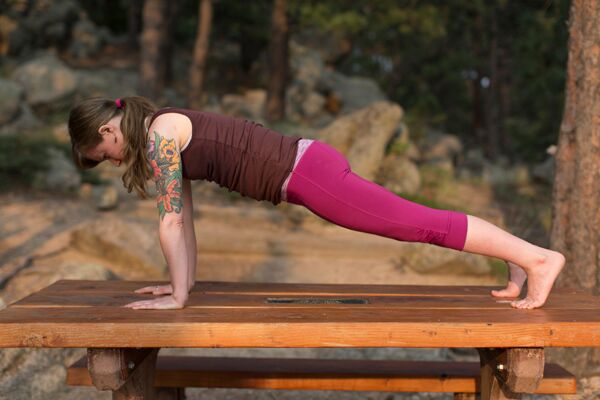
Plank position
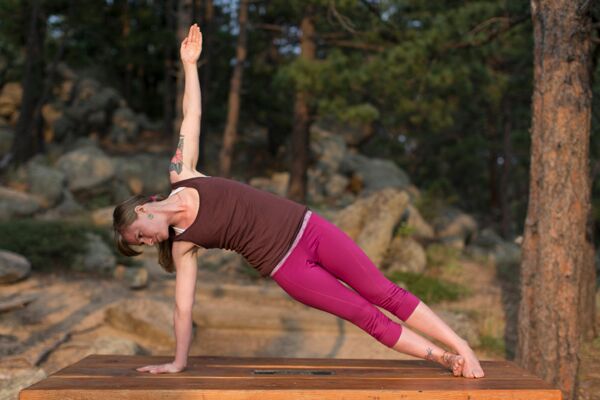
Vasisthasana
Step-by-Step Instructions for Vasisthasana
- Begin in a centered “plank position”. This looks like a push-up position with the arms held straight. See the picture above for an example.
- From here, bring all of the weight into the right arm as you bring the left arm up toward the sky. At the same time you will come onto the right foot, placing your weight on the outer edge of the foot.
- Have the left foot placed directly over the right foot. The legs should be straight, firm and directly on top of each other.
- The arms are both completely straight and perpendicular to the floor. They should be positioned so they are directly in line with each other. The bottom palm is placed with the fingers pointed in the same direction as the head, the top palm is pointed directly to the sky.
- The body should now be sideways and in a straight line, as if between two sheets of glass. The only areas that are bearing weight will be the right hand and the outside of the right foot.
- The mid-region should not be slouching or falling to the ground, rather keep the abdomen firm and lifted to keep in line with the body. This will help to build strength and tone in the abdomen muscles.
- The gaze can be looking forward, down or up depending on what feels best for you and your body.
- Once you have a strong and balanced foundation, stay here for about 3 to 5 long and steady breaths to begin. If you are looking to gain strength, you can increase the amount of time you stay in this pose overtime when practiced regularly.
- After you complete the right side come back into the plank position, just for one breath. Then move over to the left side, repeating the same steps.
Vasisthasana for Each Dosha
- Vata types should practice this pose focusing on the balancing, strengthening and stable aspects of this posture. They can add in Balasana (child’s pose) between sides if needed.
- Pitta types should avoid staying too long in this pose, due to its heating nature. They can stretch the top arm overhead ( as in parallel to the ground), stretching out the side waist to expel heat from the solar plexus region. Pitta types can also add in Balasana (child’s pose) between sides if needed.
- Kapha types should add in some movement by either moving from side to side through plank pose in a Vinyasa style flow (moving sequentially with the breath); or they can stay on one side and flow up and down strengthening the side body (see instructions below).
Vasisthasana Vinyasa Variation
- From Vasisthasana, take an inhale. On the exhale flow the top arm down as you simultaneously lower the side body, steadily and with control. This means you are not just flopping down, but instead gracefully using your strength to move into (and eventually out-of) this flowing position. **See pictures below.
- On the next inhale, bring the top arm back overhead, as you simultaneously lift the side body back into the original position.
- Repeat this vinyasa style flow 3-5 times to begin. Once the strength increases with consistent practice this number also should increase.
- This flowing variation is best for Kapha types and Kapha imbalances.

